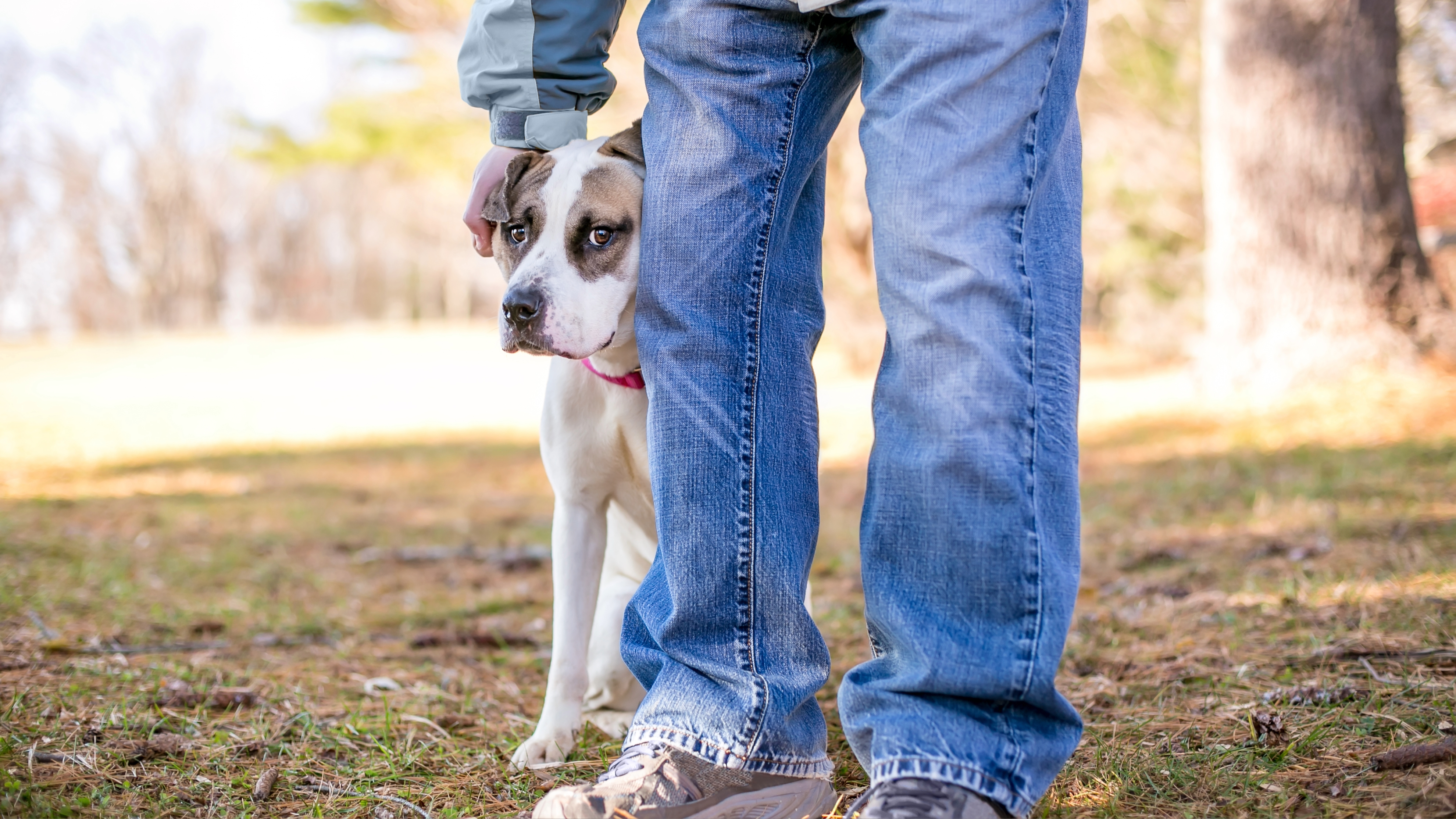Trainer shares five mistakes you want to avoid making if you have a dog who’s scared of strangers
Though we might mean well, we can sometimes make things worse without realizing it.

Some dogs absolutely love meeting new people – maybe even too much! But others can be wary of strangers, and this can manifest itself in lots of different ways from hiding to barking and lunging to being overly hyperactive.
Often, when we have dogs who are scared of strangers, we mean well but find ourselves doing things that are actually counterproductive, and can make matters worse – you don’t need to give strangers some of the best dog treats to feed your pup, for example.
And that’s why the certified dog behavior coaches at Calm Canine Academy have outlined five common mistakes that dog parents often make when we have dogs who are wary of strangers. Let’s take a look.
A post shared by Calm Canine Academy (@calmcanineacademy)
A photo posted by on
First, the Academy coaches list a few of the signs that your dog might be scared of strangers. Though they’re quite similar to the general signs of anxiety in dogs, we might not instantly recognize some of them as being related:
• Barking
• Lunging
• Growling and snapping
PetsRadar Newsletter
Get the best advice, tips and top tech for your beloved Pets
• Avoiding and hiding
• Not being able to relax
• Hyperactivity
It’s important to take note of these to identify whether your dog is scared of strangers, and recognize the mistakes we can make without realizing in order to help our pups.
1. Taking our dogs everywhere: When dogs are scared of strangers, they get overwhelmed by people easily. While it’s easy to think that more exposure to people will help, it’s actually better to carefully control our pups’ interactions with strangers.
It’s a good idea to walk your dog in quieter places and at less busy times, give them a space to avoid guests at home, and simply leave them at home if you’re going to be somewhere with a lot of people, like a party at a friend’s house.
2. Meeting everyone in public: “Many folks think the antidote to a stranger-fearful dog is to introduce them to anyone and everyone,” the coaches explain. “More often than not this backfires with unpredictable and stressful interactions leading to more fear and distrust.”
Instead, you can introduce your dogs to people carefully – stick to people who you know will cooperate, such as friends who like dogs but can be trusted to follow your pup’s lead.
3. Training on the fly: It’s easy to get into the habit of training our dogs without a real plan or structure in place, but this won’t help them become more comfortable with strangers. It’s best to have carefully planned training sessions.
4. Letting strangers feed treats: “Giving strangers cookies to feed your dog may seem like a good way for them to make friends,” the coaches say. “However, it often encourages a dog closer than they actually feel comfortable and can do more harm than good.”
Letting strangers interact with your dog isn’t inherently harmful, but you should tailor the interactions to your dog’s needs. Training dogs with treats can be great, but this isn’t always the best way to go about things.
5. No communication skills: Building skills like leash walking and engagement in dogs who are scared of strangers can be tricky, particularly in busier environments. You may find it beneficial to speak to a trainer or coach to identify and remove barriers that are impacting your ability to help train your dog who’s scared of strangers.
If you’re finding it difficult to help manage a dog who’s reactive with strangers, you might also find this article useful: Owning a reactive dog is hard. Here's how I navigated the social challenges with my pooch.

Adam is a freelance journalist specialising in pets, music and culture, and mental health and wellbeing. He investigates and writes the large majority of news on PetsRadar, and collaborates with veterinary experts to produce informative pet care content.
Adam has a journalism degree from Southampton Solent University and a masters degree in Magazine Journalism from Cardiff University. He was previously senior editor at dog advice website DogTime.com, and has also written for The Independent, GoodToKnow and Healthline.
He owns two rescue cats, Bunny and Dougie, and has also previously had a rabbit, fish and Roborovski dwarf hamsters.
